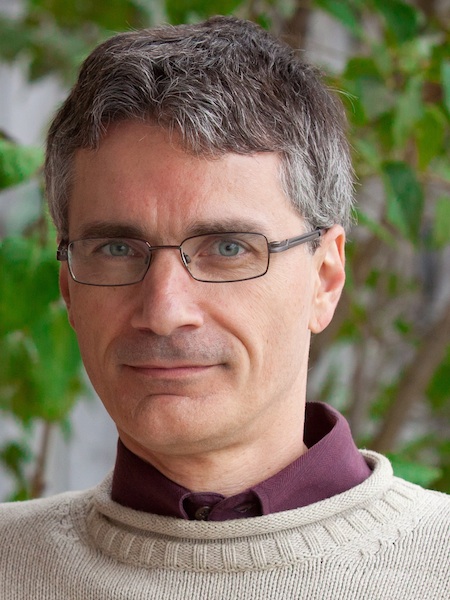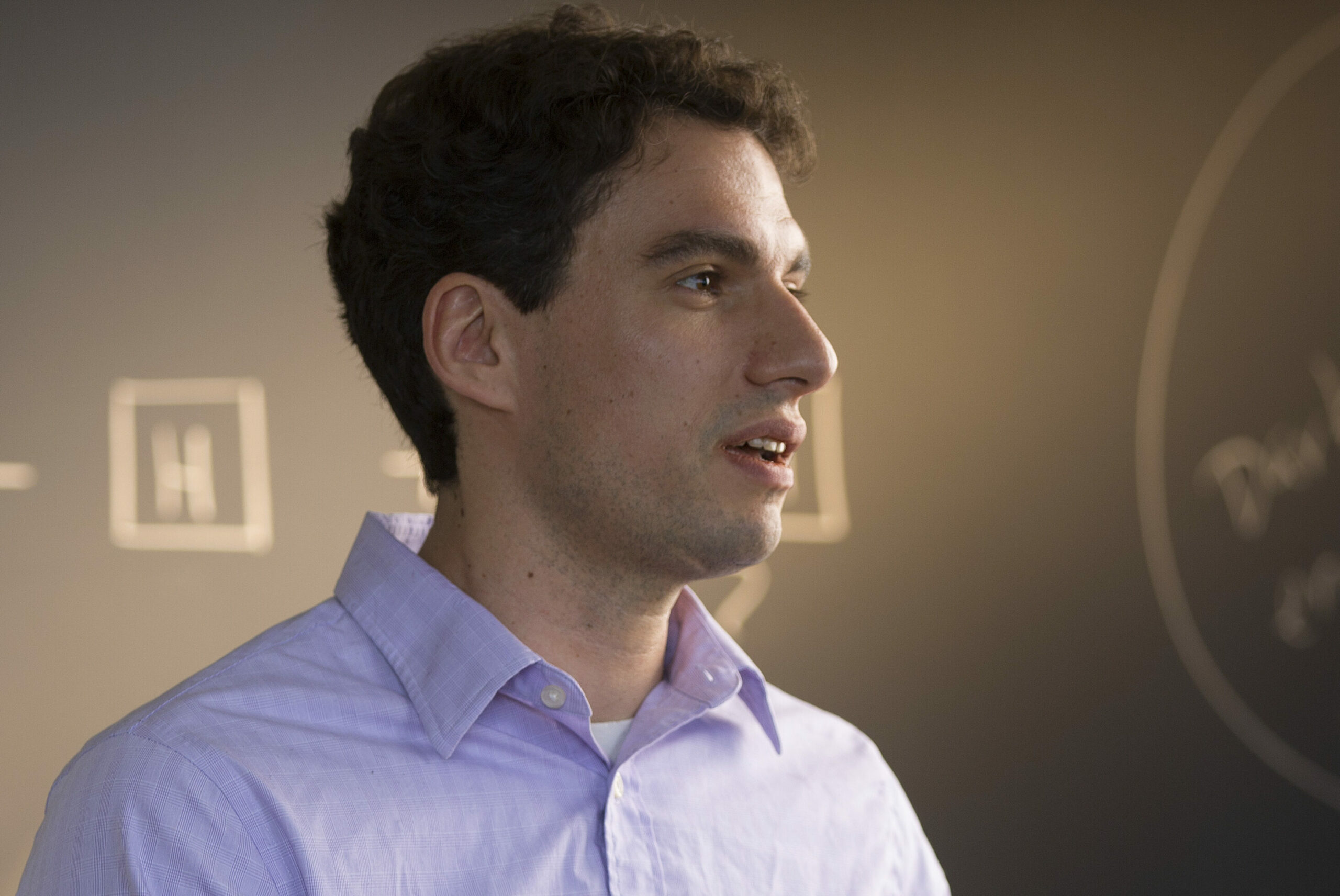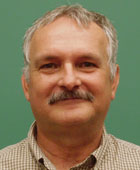We have an energetic group of several faculty members, research associates, and students. The students are actively involved in various aspects of the design, construction, and installation of detectors.
The students also work in close collaboration with colleagues from other universities within Canada, as well as many institutes from other countries. For more information on our group and high energy physics in Canada please contact us.
Students with an interest in high-energy physics are strongly encouraged to become a team member and participate in this very exciting field of physics.
Click on the links on the pull-down menu to meet the group members.

Deborah Harris
My research is focused on understanding neutrinos, particles which although they weigh almost nothing and almost never interact, could be the reason that the universe is dominated by matter and not simply light. I work primarily on the DUNE experiment, a new cutting-edge neutrino experiment based in the US that will send neutrinos 1300km through the the earth and study how much they oscillate from one kind to another in the intervening time. By comparing neutrino oscillations to antineutrino oscillations, we may finally find the process that is different enough between matter and antimatter to create the universe we inhabit today. The DUNE experiment must be designed and built using the lessons learned from the current generation of neutrino experiments. In order to prepare for DUNE I am studying in detail how neutrinos interact in matter on the MINERvA experiment at Fermilab, and studying what the current oscillation experiments (T2K and NOvA in Japan and the US, respectively) can tell us.
Research topic(s), keyword(s): Particle Physics, Neutrino Physics
Office: 245 PSE
Phone: (416) 736-2100 x20798
E-mail: deborahh@yorku.ca
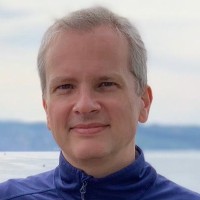
Balint Radics
Neutrinos, the lightest weakly-interacting elementary particles that are one of the most abundant in the Cosmos, can traverse the Earth and the Universe without much interaction. Modern physics and technology enable us to create a beam of neutrinos and measure their properties. I participate in two of such experiments: in the currently running Tokai-to-Kamioka (T2K, Japan) and the upcoming Deep Underground Neutrino Experiment (DUNE, USA) long-baseline neutrino-beam experiments. The T2K experiment recently revealed the first signs of possible Charge-Parity-symmetry (CP-symmetry) violations in the lepton sector of the elementary particles. The upcoming DUNE experiment will be a game-changer in particle physics: it is designed to measure the size of the CP-symmetry violation and other neutrino properties with unprecedented precision. In my research, I analyze the T2K data and prepare for the DUNE era of "precision neutrino measurements" that might unlock further hidden

Wendy Taylor
I am a member of the ATLAS experiment at the Large Hadron Collider at CERN, in Geneva, Switzerland. The Large Hadron Collider is the world's highest-energy particle accelerator, currently delivering 13-TeV proton-proton collisions. The ATLAS experiment records and analyzes these collision events. ATLAS is an international collaboration of 3000 physicists from more than 170 universities and laboratories in 38 countries, with a large Canadian effort.
In 2012, the ATLAS and CMS experiments announced the discovery of the Higgs boson. As a consequence, particle physicists now understand why some particles have mass while others, like the photon, are massless. My own research on ATLAS is the search for another hypothetical particle, the magnetic monopole. A magnetic monopole is a particle postulated to carry only a south or a north pole. If a magnetic monopole exists, theory shows that this would explain why there appears to be a fundamental unit of electric charge.
Nikita Blinov
I am interested in using theory to connect the earliest moments in our Universe’s history with observations and experiments today, with the goal of learning about the fundamental constituents of our universe. The big problems that I work on include the nature of dark matter; the origin of neutrino masses; and the excess of matter over antimatter in our universe. Solutions to these problems require the introduction of physics beyond the Standard Models of particle physics and cosmology, so I am generally interested in searching for this "new'' physics.
I am a theoretical physicist, but a large component of my work involves understanding how various models for beyond Standard Model physics can be constrained by existing data spanning particle physics (e.g., from particle accelerators), cosmology (e.g., from the Cosmic Microwave Background), astrophysics (e.g., from observations of stars and supernovae) and precision laboratory experiments (e.g., searches for dark-matter-induced energy depositions in sensitive detectors). I often develop new search strategies for existing experiments, or propose new ones.
An up-to-date list of my papers can be found on INSPIRE.
Matthew Johnson
The goal of my research is to understand the fundamental laws of nature through their impact on cosmology. I am primarily a theorist, dabbling in cosmology, field theory, string theory, and gravitation. I am actively engaged in research on cosmic inflation, eternal inflation, topological defects, and models of dark energy. I also design data analysis algorithms to confront fundamental theory with observations of the Cosmic Microwave Background (CMB) radiation. Here is a sampling of the questions that drive my research: How big is the universe? What might lie beyond our observable universe, and how could we confirm or disprove various proposals? What role do the extra dimensions predicted by string theory play in cosmology? What is the fundamental nature of space-time singularities? Are there new ways of looking at cosmological datasets that could be useful when confronting theories with data? Can computer simulations of the very early universe shed light on it's possible initial conditions and evolution?
Randy Lewis
Computer simulations of lattice quantum field theories are used to study topics in QCD (the theory of quarks and gluons) and to explore theories beyond the standard model of particle physics.
Sean Tulin
My goal is to illuminate the theory of dark matter. Dark matter is a mysterious source of mass in the Universe that outweighs all normal atomic matter by 5-to-1, yet is otherwise invisible. The important questions are what are dark matter's properties and how do they shape galaxies, clusters, and the universe as a whole?
My research spans many possible avenues for exploring dark matter physics, from the Large Hadron Collider and other terrestrial experiments to the entire cosmos. Currently, I am using observations of astrophysical structure, from galaxies to much larger scales, to test different dark matter theories. These cosmic systems serve as natural particle colliders for dark matter.
Additionally, I have broad interests in physics beyond the Standard Model of elementary particles and forces. These include searches for new forces, precision studies of the Higgs boson as a window to new physics, and the matter-antimatter asymmetry of the Universe.
Research topic(s), keyword(s): Particle physics, astrophysics, cosmology
Office: 217 PSE
Phone: (416) 736-2100 x33504
E-mail: stulin@yorku.ca
Sampa Bhadra
We are in an exciting phase of data taking and physics results, with a program which will last well into 2006. We have just completed, in collaboration with our University of Toronto colleagues, a hardware project constructed in the HEP lab, employing and training many undergraduate students in the process. We have been involved in the design, construction and testing of 3200/12000 channels of a Straw Tube assembly. They will be sent to the ZEUS experiment and installed and commissioned, in time to coincide with the ZEUS and HERA upgrade in 2001. After this period we expect a factor of 5 increase in the number of events collected per year. This will open new physics channels, and allow finer measurements of current results.
Roman Koniuk
Essentially all my research has aimed at an understanding of strongly coupled quantum field theories, quantum chromodynamics (QCD) in particular. QCD is the theory of the nuclear and sub-nuclear strong force, the force that binds protons and neutrons to form nuclei and at a deeper level, the force that binds quarks to form neutrons and protons. Although the theory can be stated very compactly and elegantly, its solution has eluded physicists for close to 30 years. This is perhaps not surprising as QCD can be thought of as a theory of 104 complex-valued quantum variables at each point in space. One of the most promising approaches for studying QCD is Monte-Carlo simulation of the field theory on a space-time lattice. My students and I are using this technique to study nuclear forces, colour-flux-tube breaking and other problems.
Research topic(s), keyword(s): QCD, lattice gauge theory, non-Perturbative quantum field theory
E-mail: koniuk@yorku.ca
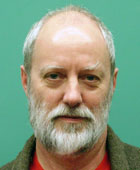
Kim Maltman
I am interested in the consequences of the Standard Model of particle physics for few-body nuclear systems and low-energy particle physics and dynamics. Recent research has focussed on the QCD, the theory of the strong interactions, using the techniques of chiral perturbation theory and various versions of QCD sum rules to study weak strong and electromagnetic observables.
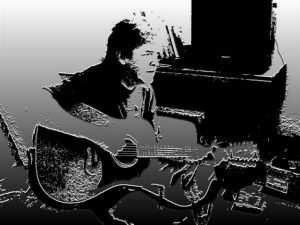
Scott Menary
At the moment I am concentrating on CPT and WEP tests using trapped antihydrogen with the ALPHA collaboration. I am principally involved with the design and construction of a TPC for vertex reconstruction as well as scintillator systems for cosmic ray rejection for the ALPHA-g experiment. I am also nominally on the DUNE experiment whose principle goal is to make further precise measurements of neutrino properties using the neutrino beam from Fermilab and a large liquid argon TPC.
Research topic(s), keyword(s): CP and CPT violation, neutrinos, antihydrogen
E-mail: menary@yorku.ca
Priyanka Kumari
I recently joined the ATLAS group under the supervision of Dr. Wendy Taylor. I am ramping up on the ITk Inner Detector project and on exotics physics analysis for Run 3.
Research topic(s), keyword(s): Magnetic monopole search, ATLAS, ITk
Contact
Office: PSE 238
Phone: (416) 736-2100 x77748
Email:
Supervisor: Dr. Wendy Taylor
Noë Roy
In the York neutrino group, I am involved in the long-baseline neutrino oscillations experiments, T2K and DUNE. The T2K experiment has provided a precise measurement of the neutrino oscillation parameters and has showed first hints of a violation of the charge-parity (CP) symmetry. The DUNE experiment, aims to provide a precise measurement of the magnitude
of the CP symmetry violation by neutrinos in the next decades. A large CP violation could be an ingredient to explain why there is an asymmetry between matter and antimatter in the Universe.
In order to make the best use of the data collected by the long-baseline experiments, I am also working on the analysis of data from the MINERvA experiment. This experiment aims to provide high precision measurements of how neutrinos interact in a detector. These measurements are of great use to (future) long-baseline neutrino experiments, as they help to understand the different components of their neutrino signals.
William Parrott
Rituparna Banerjee
I am currently working on the DUNE Experiment (under the supervision of Prof. Deborah Harris). I am specifically working on the analysis of the ProtoDUNE Experiment to study the absorption cross section for very low energy pions.
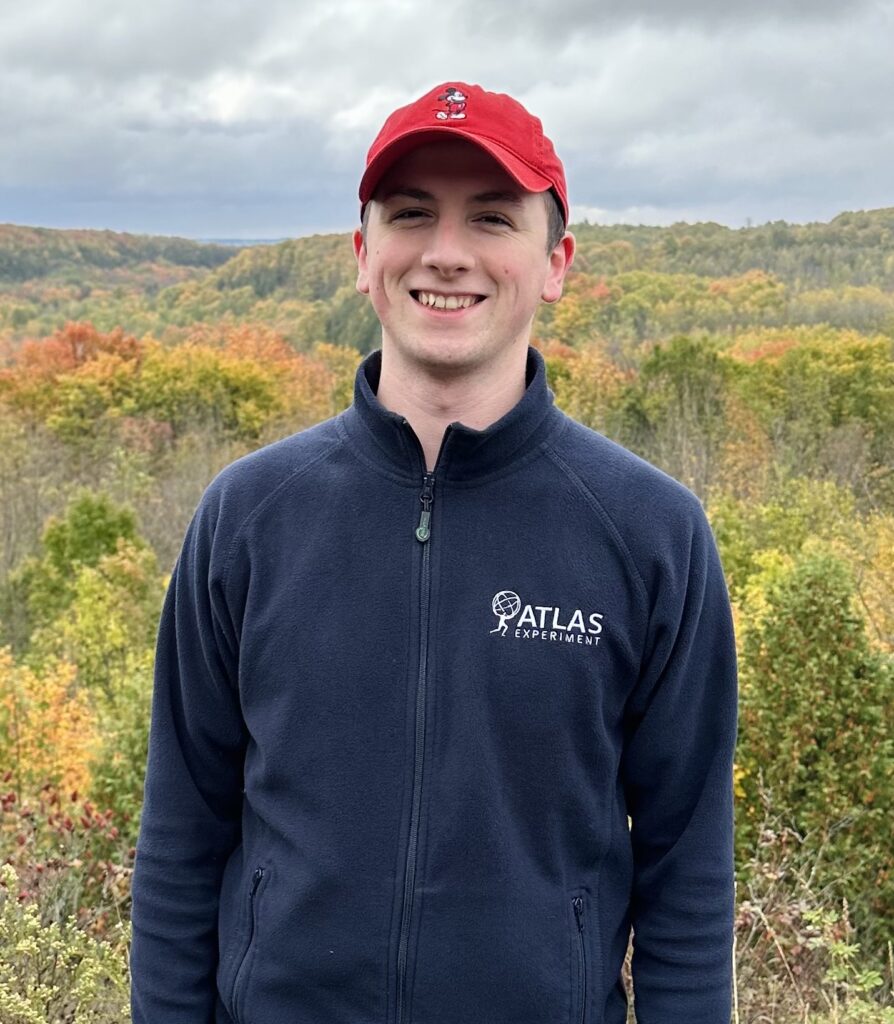
Ethan Brooks
Under the supervision of Dr. Wendy Taylor, the highly ionizing particle group of the ATLAS Collaboration looks for magnetic monopoles and highly electrically charged objects at the Large Hadron Collider. My research is related to particle identification, specifically in the transition radiation tracker of ATLAS. Using machine learning techniques, I aim to improve current particle identification software for both the highly ionizing particle analysis and the overall transition radiation tracker. My current research focus is on the inclusion of dyons, which are particles that have both magnetic and electric charge, as well as preparing software tools for the highly ionizing particle search in Run 3 of the LHC.
Research topic(s), keyword(s): Magnetic monopole search, ATLAS, TRT
Office: PSE 238
Phone: (416) 736-2100 x77748
Supervisor: Dr. Wendy Taylor
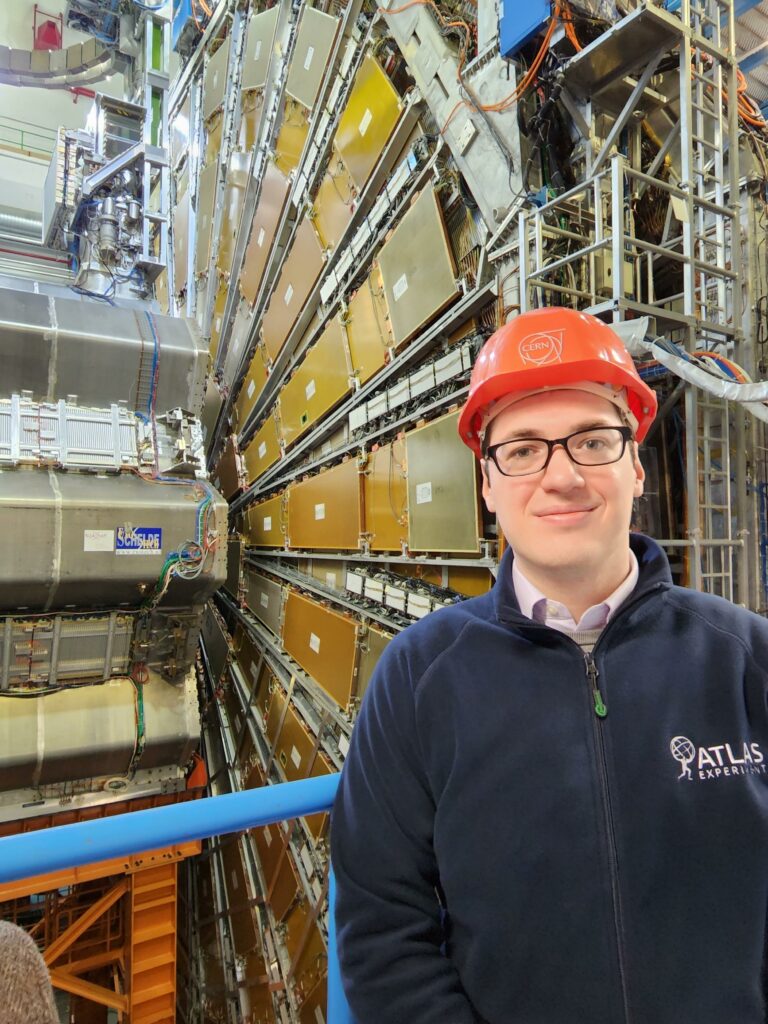
Justin Kerr
Magnetic monopoles are a highly motivated exotic particle. Under the supervision of Dr. Wendy Taylor, I work on the analysis software we use to search for them in data collected by the ATLAS detector from proton-proton collisions in the Large Hadron Collider. My work so far has focused on the limit setting software we use to determine which monopole mass/charge combinations have been excluded by our results alongside updates to our particle generation simulations in the MadGraph software package. Recently I have been working to produce event display images of simulated monopole candidates in ATLAS and to develop a new python-based framework for our analysis utilizing columnar analysis. I am also working on updating the calibration software used by the Transition Radiation Tracker, one of the components of the ATLAS detector that is used to detect charged particles.
Research topic(s), keyword(s): Magnetic monopole search, ATLAS, TRT
Office: PSE 238
Phone: (416) 736-2100 x77748
Supervisor: Dr. Wendy Taylor
Maria Mehmood
I am working under the supervision of Dr. Deborah Harris on experimental particle physics, with a focus on Neutrino Oscillation experiments. My research currently pertains to extracting an inclusive double differential anti neutrino cross section in terms of muon kinematics on hydrocarbon using data collected by the MINERvA experiment. Cross section measurements are vital for neutrino oscillation experiments and for probing the weak structure of the nucleus. This is a work in progress and will be completed soon.
Research topic(s), keyword(s):
Contact
Office:
Phone: (416) 736-2100 x
Supervisor(s): Dr. Deborah Harris
Rowan Zaki
Under supervision of Prof. Harris, I have been able to expand my knowledge of and further fuel my passion for the field of neutrino physics. My efforts are spread between the Deep Underground Neutrino Experiment (DUNE) in the US and the Tokai To Kamioka (T2K) experiment in Japan. Both of these experiments fall in the the category of accelerator based neutrino experiments, where we study the behavior and properties of neutrinos as they propagate through the Earth's crust. My contribution for DUNE is centered around the characterization and testing of the pixelated liquid argon near detector, as well as the assembly of prototype setups. For T2K, I am working on improving our near detector fit by potentially including more parameters or by improving our understanding of the separation between certain final state samples.
Richard Bloch
Samantha Hergott
Jordan Krywonos

Emanuele Mendicelli
There are many natural phenomena governed by the strong interaction that cannot be described and understood inside the perturbative approach of QCD -where the Feynman diagrams are commonly employed - like the hadron spectroscopy, the QCD phase diagram, and all the phenomena related to the confinement property of the QCD. For many of these, non-pertubative phenomena, numerical simulation inside the framework of lattice QCD (LQCD), in which the theory is discretized from first principle, has been proved to be highly successful.
But still, many phenomena are impossible to be studied even inside the framework of LQCD, because for many of them, the associated partition function cannot be written without using a complex phase, whose presence, break down the well-established Monte Carlo techniques, this is known as the sign problem.
The sign problem could be in many cases avoided using advanced techniques or using dual effective models with positive Boltzmann weight, obtained by considering only the QCD degrees of freedom relevant to the phenomena. But all these approaches, still have a great limitation, in fact no dynamical strong interaction process in real time, like collision or propagation, can be simulated.
In the last few years, a new pioneering field related to the existence of prototype of quantum computer, seems to be promising in the possibility of avoid the above limitation and explore dynamical processes due to the possibility of increasing the Hilbert space without the need of huge computational resources.
Few examples of application of quantum computing in lattice gauge theory are already present, where real-time propagation and real-time collision are observed.
My current research interest is divided between: the study of the QCD phase diagram and the properties of hadrons, using effective dual models that implement traditional Monte Carlo techniques on classical supercomputers and exploring the potentialities and possibilities offered by today quantum computers, such as IBM Q and D-Wave, in study thought simulations, low-dimensional lattice gauge theories.
Key words: Effective-spin model; Lattice QCD; Quantum Computing
Contact
Office: 221 PSE
Phone: (416) 736-2100, x33707
E-mail:
Supervisor(s): Dr Randy Lewis
Ali Hosseinzadehkavaki
Sarmed A Rahman
Matthew Tsang
| Year | Student | Supervisor | Project | Current Position |
|---|---|---|---|---|
| 2023 | Ana Maria Rodriguez Vera | Taylor | ATLAS | Postdoctoral Fellow, Northern Illinois University, IL, USA |
| 2023 | Wen-Yi Song | Taylor | ATLAS | Financial Risk Modeller at Deloitte |
| 2022 | Mitchell Yu, PhD | Bhadra | T2K | |
| 2019 | Alexandra Terrana, PhD | Johnson | Cosmology | Assistant Professor, Minerva University, San Francisco, USA |
| 2019 | Christopher James, MSc | Maltman/Lewis | Theory | Data Management Consultant, Kubrick Group, London UK |
| 2018 | Adam Azoulay, MSc | Taylor | ATLAS ITk | Business Intelligence Team Lead, Game Hive, Toronto |
| 2018 | Elder Pinzon, PhD | Bhadra | T2K | Data Science Manager, Toronto |
| 2017 | Melissa Mathers, MSc | Menary | ALPHA | Enterprise AI Technical Consultant, IBM, Toronto |
| 2017 | Sungeon Oh, MSc | Johnson | Cosmology | PhD student at U. Waterloo |
| 2017 | James Thompson, MSc | Menary | ALPHA | |
| 2015 | Gabriel Palacino, PhD | Taylor | ATLAS | Postdoc at Indiana University |
| 2015 | Andrea Capra, PhD | Menary | ALPHA | TRIUMF Scientist |
| 2015 | Mark Wurtz, PhD | Lewis | Lattice QCD | Engineering Physics Instructor, U of Saskatchewan |
| 2015 | Wei Lin | Johnson | Cosmology | |
| 2013 | Anum Qureshi, MSc | Taylor | ATLAS | PhD student at University of Adelaide |
| 2013 | Kristen Marsh, PhD | Lewis | Lattice QCD | |
| 2012 | Vyacheslav Galymov, PhD | Bhadra | T2K | Postdoc at University of Lyon, France |
| 2012 | Chanpreet Amole, MSc | Menary | ALPHA | Postdoc at University of Zurich, Switzerland |
| 2011 | Steven Beale, PhD | Taylor | DZero | Meteorological Data Scientist/Engineer, St. John's |
| Hasan Malik, MSc | Menary | ALPHA | Professor, Seneca College | |
| 2009 | Jerome Whyte, PhD | Menary | ZEUS | Manager, Bank Data Mining, Rogers Communications |
| 2008 | Victoria Martynenko, MSc | Taylor | ATLAS | Programmer in industry |
| 2008 | Umer Noor, PhD | Bhadra | ZEUS | |
| 2006 | Jeff Standage, PhD | Bhadra | ZEUS | |
| Michael Cardy, MSc | Bhadra | ZEUS | Industry | |
| Peter Fagerstroem, MSc | Bhadra | ZEUS | Project Manager, TD Bank | |
| Mosen Khakzad, PhD | Bhadra | ZEUS |



